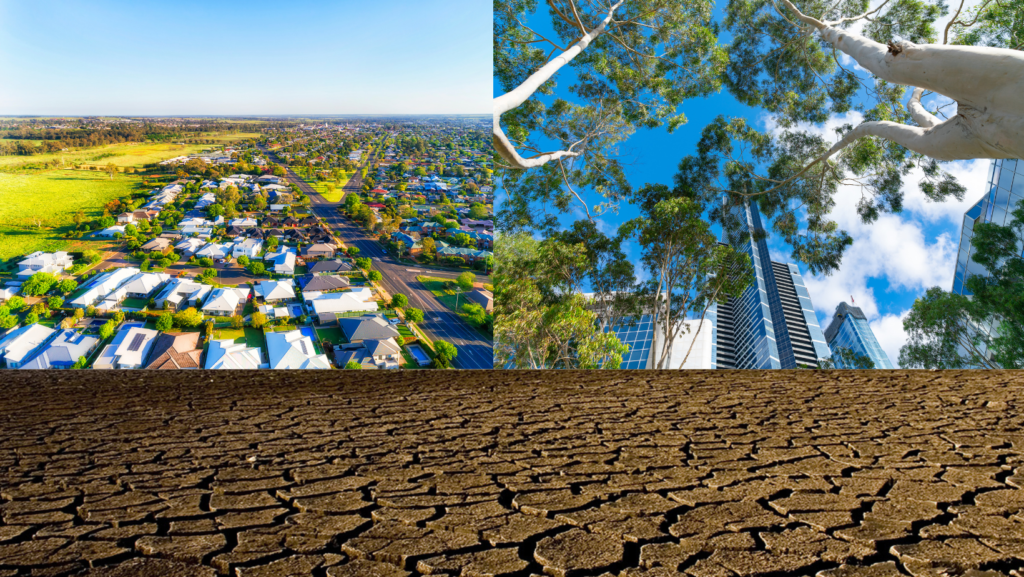Climate change is increasing water scarcity
Climate change is increasing water scarcity
by Damien Pearson, General Manager, eWater Solutions
Climate change is one of the defining challenges of this century.
Water is the primary expression of the effects climate change has on humanity and the environment manifesting itself through droughts, floods, water stress, and declining water quality. In many countries reliable supplies of freshwater are becoming scarce, undermining economic growth, increasing poverty, placing vulnerable people at risk and further disadvantage, and damaging the environment on which all life depends. The “livelihood crises” caused by the climate crisis have been identified by the World Economic Forum as “one of the most potentially severe risks over the next decade.” [i]
Effective management of water resources in the face of changing climate is essential to achieving all 17 of the United Nations Sustainable Development Goals agreed by all nations in 2015.

How Australia can make a difference
As the driest inhabited continent on earth, Australia has become an internationally recognized leader in water policy and management.
Our sought-after expertise includes advice on transparent water allocation systems, efficient irrigation practices, and technologies, drought mitigation measures, allocation of environmental water flows, as well as reforms in urban water and sanitation.
Importantly in the context of climate change, Australia’s reforms include an explicit focus on economic efficiency and environmental sustainability.[i] However, Australia is a continent with many different climate zones and many different water use profiles.[ii]
Consequently, Australian states and territories have had to develop water governance frameworks appropriate to their climate and environmental contexts while maintaining content and coherence with national plans and agreements. One size does not fit all.

eWater Source, Australia’s agreed National Hydrological Modelling Platform (NHMP), supports integrated planning, operations, and governance from urban to catchment to river basin scales including taking human and ecological influences into account. Source accommodates diverse climatic, geographic, water policy and governance settings for both Australian and international climatic conditions.
Our platform integrates water resource assessment and policy, to produce water accounts and manage rivers, and share water according to allocations and agreements.
eWater Source has become an important tool for understanding water supply and demand, managing allocations between users, and delivering water when and where it is needed.
Designed to be adaptive and readily customized to meet local or specific needs, eWater Source is underpinned by world-class science and technical innovation, and assists in the following broad areas:
- Assessing climate change impacts on water availability and demand over time
- Establishing effective water policies, regulatory systems, and institutions to enable infrastructure investments (governance policies and systems)
- Collecting and managing water data and developing water information systems
- Enabling water allocations and management of river basins and urban water supply
eWater Source has been applied and validated extensively in a wide range of real-world water use situations, both in Australia and internationally, supporting the management of rivers in Australia, the Mekong region, across South Asia, Africa, and the Middle East.
Growing urban demand
Our world is rapidly becoming more urbanized. In 2018, 55 percent of the world’s population was living in urban areas, a proportion that is expected to increase to 68 percent by 2050. Projections show that urbanisation, combined with the overall growth of the world’s population could add another 2.5 billion people to urban areas by 2050, with close to 90 per cent of this increase taking place in Asia and Africa, according to United Nations data set[1].
With a growing focus on meeting a more spatially concentrated water demand, planners require tools to understand their water supply and drainage options and constraints, along with means to assess alternative scenarios to manage these. Water-sensitive urban design (WSUD) seeks to blend traditional rainfall-dependent and alternative water supplies (such as recycled water, and rainwater tanks) to enhance water security.
To understand this blend of supplies and potential trade-offs, eWater MUSIC and Urban Developer models are designed to manage the interaction between various water supply systems as well as capture all water cycle components including rainfall and stormwater runoff, potable water, and the recycling / reuse of wastewater. These tools enable robust and reliable decision-making for secure urban water supplies.
Climate Change is exacerbating the water scarcity crisis through changing weather patterns and increasing frequency and intensity of extreme weather events. The water challenge has become “too much, too little, or too polluted”.
Climate change adaptation primarily demands climate-resilient water management and eWater is ready to share its experience and tools to assist countries facing persistent poverty and disadvantage resulting from the impacts of climate-driven water scarcity.

eWater Group is jointly established and owned by the Australian Federal and all State and Territory governments to maintain and further develop Australia’s internationally respected water modelling tools, and to provide support, program delivery, and training domestically and internationally.
[1] 68% of the world population projected to live in urban areas by 2050, says UN | UN DESA | United Nations Department of Economic and Social Affairs,
[i] Aither 2022 Governance as Infrastructure for Water Security.
[ii] Productivity Commission, National Water Reform 2020, Inquiry Report. p68